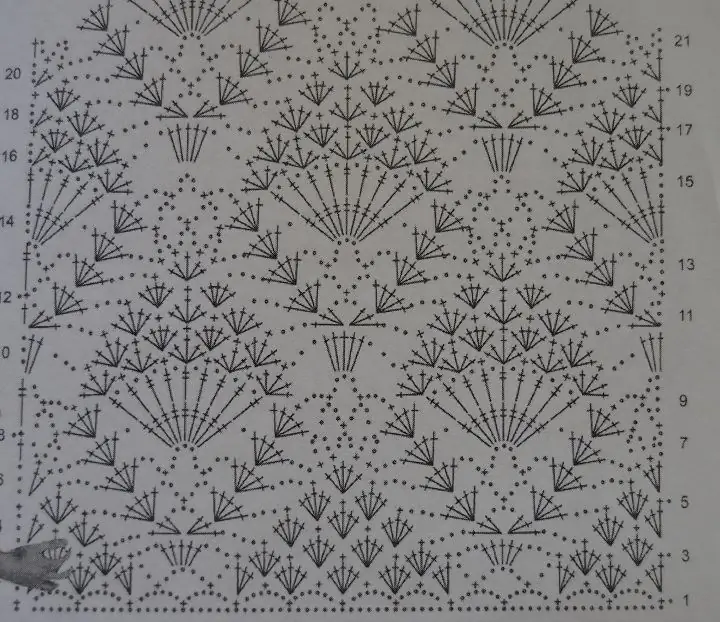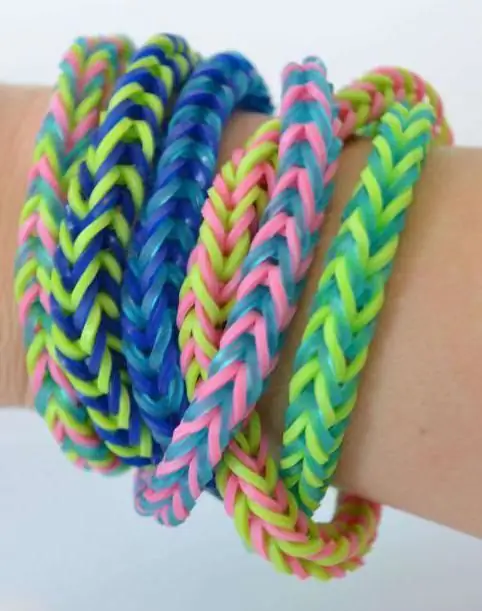
Inhaltsverzeichnis:
- Autor Sierra Becker [email protected].
- Public 2024-02-26 04:44.
- Zuletzt bearbeitet 2025-01-22 22:11.
Jede Frau, unabhängig von Alter und Können, möchte stilvoll und attraktiv aussehen. Die wichtigste "Waffe", um dieses Ziel zu erreichen, ist die Garderobe, oder besser gesagt, ihre Originalität. Und Sie können es selbst erstellen. Mit Hilfe der folgenden Schritt-für-Schritt-Anleitung zum Erstellen eines Schnittmusters möchte ich die Ängste zweifelnder Frauen zerstreuen und Zuversicht wecken, dass es ihnen gelingen wird. Nehmen wir zum Beispiel den Schnitt eines Rocks, der das wichtigste und integrale Element der Garderobe einer echten Frau ist.

Wo anfangen?
Zuerst müssen Sie sich für den Stil entscheiden: Ein Kleidungsstück kann eine klassisch gerade, fröhlich ausgestellte Sonne sein oder wie ein eleganter Bleistiftrock aussehen. Als nächstes müssen Sie den Rock schneiden. Erwägen Sie mehrere Optionen.
Erstellen eines Musters aus der Grundbasis eines geraden Rocks
Dieser Schritt ist zum Nähen fast aller Modelle erforderlich, mit Ausnahme der folgenden: ausgestellte Sonne, halbsonne, elastischer Rock.
Erfahrene Schneiderinnen zeichnen niemals für jedes Modell ein separates Schnittmuster. Grundlage ist immer eine Skizze des Designs eines geraden Rocks. Ein Muster genügt, exakt auf Ihre Figur abgestimmt. Diese Zeichnung wird Ihnen ewig dienen und die notwendigen Anpassungen können direkt auf dem Stoff vorgenommen werden.
AuszahlungMaße und Materialverbrauch
Um den gewünschten Schnitt des Rocks zu zeichnen, müssen Sie den Taillen- und Hüftumfang (die Maße werden in halber Größe gemessen) und die Länge des Produkts messen. Die resultierenden Zahlen (mit einer Zunahme von einem Zentimeter pro freier Passung) werden auf Papier notiert. Die genaue Länge des Produkts ist der Abstand von der Taille zum Boden minus 40 cm. Wenn ein Bleistiftrock mit hoher Taille geschnitten ist, wird der Stoffverbrauch wie folgt berechnet: 10-15 cm werden zur Länge hinzugefügt.

Vorbereitungsphase
Der Schnitt des Rocks beginnt mit einer rechteckigen Zeichnung, bei der die Werte einer Seite der Hüftumfang und die zweite die Länge des Produkts sind.
Da das Schnittmuster für zwei Hälften des Rocks (Vorder- und Rückseite) erstellt wird, teilen wir die OB-Messung (Hüftumfang) in zwei Teile. Weiter von der Taillenlinie messen wir 20-23 cm und ziehen eine durchgehende horizontale Linie. Dies wird die Hüftlinie sein. Nehmen wir die weitere Konstruktion des Musters des betrachteten Elements der Garderobe auf.
Zeichnung
Markieren wir den Punkt "T" am oberen Rand der Linie, die den Rock in zwei Hälften teilt. Die resultierenden Intervalle aus der angegebenen Markierung sollten halbiert und mit Punkten markiert werden. Lassen Sie uns davon die Vertikalen vorne und hinten um 12 und 15 cm absenken.
Um eine schräge Taillenlinie für zwei Teile des Rocks zu zeichnen, messen Sie einen Zentimeter von der oberen linken Kante und 1,5 cm entlang der rechten Kante - für beide Teile des Produkts. Wir kombinieren diese Markierungen mit dem T-Punkt mit leicht konvexen Linien relativ zur Oberkante des Schnitts.
Zeichnen wir ein F altschema mit einer Tiefe von 3 und 2 cm.
Um die Position von Punkt T1 und Punkt T2 zu berechnen, müssen Sie sich bewerbenFormel:
(Sa+1) - (St-1) - 5/2.
Das erh altene Ergebnis sollte von der Seitennaht aus gemessen und die Punkte T1 und T2 markiert werden (Foto 1).
Also, der Schnitt des Rockes ist gar nicht so schwer. Es bleibt nur übrig, die Linien unter Verwendung einer speziellen Schablone von den Punkten T1 und T2 abzusenken. Zur Sicherheit können Sie an dieser Stelle einige Zentimeter zulassen und bereits direkt am Beschlag die Leine gemäß der Abbildung anpassen.

Merkmale des Sonnenrockschnitts
Dieses Modell eignet sich für junge Damen mit dünner Taille und Besitzer von großen Hüften, da es ihre Fülle verbergen kann.
Die Passform eines ausgestellten Rocks beginnt wie bei jedem anderen mit dem Maßnehmen, nämlich: FROM (Taille) und CI (Produktlänge).
Die Operation wird ohne Muster direkt auf dem Stoff mit folgender Rechnung durchgeführt:
Radius=1/6 Taillenumfang - 1 cm.
Der resultierende Wert muss um einen Bogen von der Ecke abgesetzt werden (dazu können Sie einen Zirkel oder ein Zentimetermaßband verwenden). Dies wird die Taille sein. Daraus müssen Sie die Länge des Produkts zählen und Zugaben für die Nähte hinzufügen.
Der Schnitt des ausgestellten Rocks (Foto 2) - ermöglicht es Ihnen, die Ausrichtung auf dem Stoff klarer darzustellen.
Es gibt zwei Layoutoptionen:
- Bei dieser Methode legen wir den Stoff f altenfrei aus und schneiden spiegelbildlich. Diese Option wird nicht empfohlen, wenn Sie glänzende, Satin- oder Shag-Stoffe verwenden, da der Überlauf des Materials oder die Richtung des Flors anders aussehen.
- Hier hat der Stoff eine F alte, undDas Produkt wird nahtlos sein. Aufgrund der begrenzten Breite funktioniert es nicht, einen zu langen Rock zu nähen.
- Bei dieser Option wird der Stoff in vier Teile gef altet, um eine volle Vierviertelsonne zu erh alten.
Bleistiftrock
Sehr beliebtes Modell bei Frauen. Es kann in verschiedenen Längen (bis zu den Knien oder Waden), in einer geraden oder abgesenkten Version ausgeführt werden. Der Schnitt eines Bleistiftrocks mit Taschen oder tiefen F alten impliziert einen erhöhten Materialverbrauch. Variationen mit Länge und Grad der Enge helfen, die Vorteile aufzudecken und die Fehler der Figur zu verbergen. Daher wird dieser Typ unabhängig vom Alter häufig sowohl von vorbildlichen Schönheiten als auch von Frauen mit prächtigen Formen gewählt.

Cut Fit Bleistiftrock
Das Erstellen eines Musters wird normalerweise von Messungen und dem Erstellen eines Gitters des Basisschemas begleitet. Folge diesen Schritten:
- Bewege die Seitenlinien innerhalb des Rocks und wähle einen beliebigen Abstand (z. B. zwei Zentimeter).
- Damit das Element des Kleiderschranks die Bewegungen nicht behindert, muss auf der hinteren Hälfte ein Schlitz vorgesehen werden - 15-20 cm (je nach Länge und Enge des Rocks). Wir nehmen die Breite der Schlitze etwa vier Zentimeter an.
- Der obere Schnitt des Rocks kann auf folgende Weise erfolgen:
- von innen schleifen;
- einteiliger Gürtel mit Rock;
- Fabrikstrickgurt.
Nehmen wir einen Besatz aus Kontrastmaterial zum Zuschneiden. Die Länge des Besatzes errechnet sich aus der Addition der Vorder- und Teilstückehintere Teile. So ist ein vollwertiges Muster eines verengten Bleistiftrocks fertig. Bevor Sie mit dem Zuschneiden des Stoffes beginnen, müssen Sie 1 cm für die Nähte entlang der Wendepartien und 4 cm für den Saum zulassen.

Schlussfolgerung
Wenn Sie die obigen Anweisungen studieren, wird deutlich, dass die Kunst des Schneidens nicht so "höhere Mathematik" ist, wenn Sie wirklich stilvoll und originell sein möchten. Und wenn Sie Ihrer Fantasie freien Lauf lassen und das Produkt zusätzlich verzieren (das können Stoffbemalungen, Stickereien oder eine interessante Applikation sein), können Sie fest davon überzeugt sein, dass es ein solches Zweitexemplar nirgendwo sonst auf der Welt gibt. Und die Mühe lohnt sich, nicht wahr?
Empfohlen:
Gehäkelter Rock: Foto und Beschreibung

Die Damengarderobe unterliegt ständig einigen Veränderungen. Für den Winter decken sich Frauen mit warmer Kleidung ein, für den Sommer versuchen sie etwas Leichtes und Atmungsaktives zu bekommen. Füllen Sie Ihren Vorrat an Röcken auf, indem Sie sie selbst häkeln. Lang und kurz, warm und leicht, durchbrochen und dicht - all das können Sie mit Ihren eigenen Händen erstellen
Einen geraden Rock nähen: Maßnehmen, Zuschneiden, Montageauftrag, Foto

Trotz der Praktikabilität verschiedener Arten von Hosen und Jeans lieben viele Damen immer noch Röcke. Es ist feminin und schön. Einen geraden Rock zu nähen ist nicht sehr schwierig. Vielleicht ist dies eine dieser Optionen, die auch für Anfänger geeignet ist. Wir bieten eine detaillierte Beschreibung dieser Art von Handarbeiten
Wie man an einem Abend einen Tutu-Rock näht

Der Tutu-Rock ist seit einigen Jahren der Trend der Saison. Es wird von den kleinsten Fashionistas, Teenagern und zwanzigjährigen Mädchen getragen. Es ist nicht verwunderlich, dass Internetforen voller Fragen zum Nähen eines Tutu-Rocks sind. Mütter wollen für ihre Töchter eine modische Neuheit herstellen, und Anfängerinnen haben es eilig, eine Verwendung für ihre Talente im Leben zu finden
Wie man ein Gummibandarmband auf einem Webstuhl webt? Von den einfachsten bis zu den komplexesten

Kleine Gummibänder werden immer mehr zur Grundlage für Schmuck aller Art. Es ist einfach, verschiedene Techniken zu beherrschen. Es reicht aus, die Grundtechniken zu verstehen - und bald wird es möglich sein, einem Anfänger selbstständig zu erklären, wie man ein Armband aus Gummibändern auf einem Webstuhl oder ohne Webstuhl webt
Kartenideen: Wellpappe zuschneiden

Früher war es üblich, Karten für alle Feiertage zu verschenken. Die Leute versuchten, eine interessante Postkarte zu finden, um ihren Freunden oder Kollegen eine Freude zu machen. Heute ist ein solches Geschenk nicht mehr relevant. Eine originelle handgemachte Karte kann jedoch ein tolles Geburtstagsgeschenk sein
